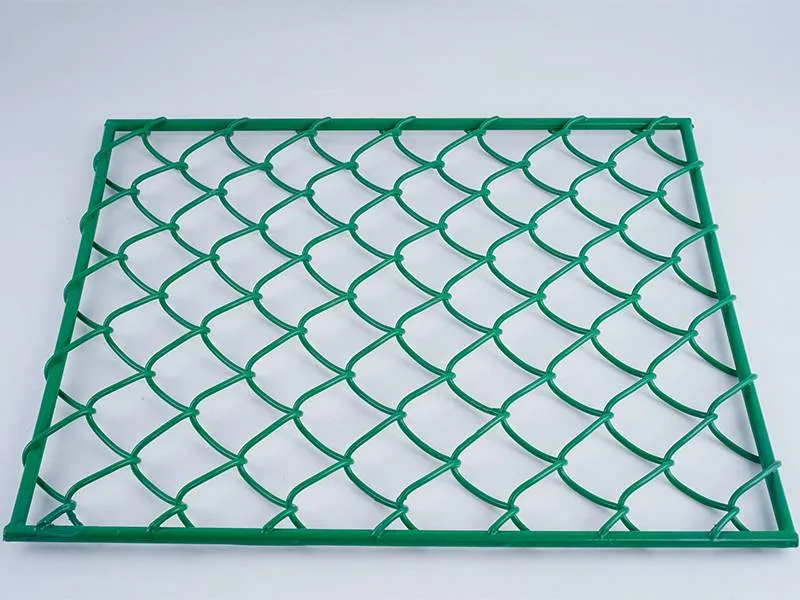- Industrial zone, South of Anping Town, Hengshui, Hebei, China.
- sales@hfpetromesh.com
- +86-18931809706
stainless steel bar grating
Understanding Stainless Steel Bar Grating Benefits and Applications
Stainless steel bar grating is an essential component in various industrial and architectural applications, known for its durability, corrosion resistance, and versatility. As a type of flooring or walkway, stainless steel bar grating is made by arranging metal bars in a grid pattern, with the bars set at regular intervals to allow for strength and drainage. This article explores the characteristics, advantages, and applications of stainless steel bar grating.
Characteristics of Stainless Steel Bar Grating
Stainless steel is an alloy known for its high resistance to corrosion, heat, and wear and tear. This unique composition makes it an ideal material for grating used in demanding environments. The standard fabrication process for stainless steel bar grating involves welding or pressing the bars onto supporting cross rods, creating a robust and stable structure. Various types of stainless steel, such as 304 and 316 grades, offer different levels of corrosion resistance, accommodating requirements based on the environment where the grating will be used.
The design of stainless steel bar grating can be customized to meet specific dimensional and load-bearing needs. Its configurations can vary from light-duty to heavy-duty applications, ensuring that it can withstand the mechanical loads that different environments present. Additionally, stainless steel bar grating comes in different finishes and styles, including smooth and serrated top surfaces, providing options for slip resistance and aesthetic appeal.
Advantages of Stainless Steel Bar Grating
1. Durability Stainless steel bar grating can endure heavy loads and harsh conditions longer than many other materials, making it a cost-effective solution in the long run. 2. Corrosion Resistance The inherent properties of stainless steel make it resistant to rust and corrosion, even in environments exposed to moisture, chemicals, or saltwater. This feature is vital for industries such as marine, chemical processing, and food production, where hygiene and safety are paramount.
3. Ease of Maintenance Stainless steel grating is relatively easy to clean and maintain. Its smooth surface allows for quick removal of debris and dirt, which is particularly important in sanitary environments.
4. Lightweight yet Strong Despite its strength, stainless steel bar grating is lightweight compared to solid metal plates. This characteristic enables easier installation, transport, and reduced support structures.
5. Aesthetic Appeal Stainless steel offers a modern and polished look that can enhance the visual appeal of industrial and architectural projects. It can be used in both functional and decorative applications, fitting seamlessly into various design schemes.
stainless steel bar grating

Applications of Stainless Steel Bar Grating
Stainless steel bar grating finds its way into numerous applications across different industries
- Industrial Flooring Used in factories, warehouses, and processing plants, stainless steel grating provides a sturdy walking surface that can handle high foot traffic and heavy machinery.
- Walkways and Platforms Safety is crucial in many industrial settings. Stainless steel grating provides a slip-resistant surface, ensuring employee safety on walkways, platforms, and staircases.
- Drainage Systems With excellent drainage capabilities, stainless steel bar grating is often used in drainage channels and trenches, allowing for the efficient flow of liquids while keeping unwanted debris out.
- Architectural Elements Designers increasingly use stainless steel grating for aesthetic applications, such as railings, screens, and facades, combining functionality with modern design.
- Food Processing Stainless steel is vital in food processing applications due to its hygienic properties, making it suitable for grating used in food handling areas.
Conclusion
In summary, stainless steel bar grating is a versatile and valuable material that plays a fundamental role in various industries. Its durability, corrosion resistance, and aesthetic qualities ensure that it meets the demanding requirements of modern applications. As industries continue to evolve and prioritize safety and efficiency, the importance of stainless steel bar grating will likely grow, solidifying its place in both industrial and architectural settings. Whether for safety, practicality, or design, stainless steel bar grating remains an indispensable asset.
-
The Power of Pyramid Shaker Screen - A 3-Dimensional SolutionNewsOct.24,2024
-
Exploring the Versatility and Durability of Steel GratingNewsOct.24,2024
-
Revolutionizing Drilling Efficiency with Steel Frame Shaker Screens for Mud Shale ShakersNewsOct.24,2024
-
Potential of Shale Shaker ScreensNewsOct.24,2024
-
Offshore Pipeline Counterweight Welded Mesh - Reinforced Mesh in Marine EngineeringNewsOct.24,2024
-
Revolutionizing Offshore Pipeline Stability with Concrete Weight Coating MeshNewsOct.24,2024
